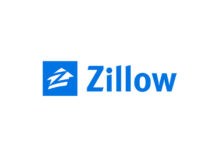InsurTech is facing a pivotal point in its evolution. Will it be able to deliver on the promise, hype and expectation of the last three years or will it slowly fade away as an interesting but ultimately short lived technology fad?
There is plenty of evidence to support the pessimists. Even the success stories are shrouded in criticism.
In the US, Lemonade and Hippo have achieved unicorn status but the valuations look rich when compared to the premium volumes and underwriting losses. In China, Zhong An’s top line continues its staggering growth but it also recorded a loss of 1.8 billion yuan (US$262 million) last year and its share price is down 80% from its peak in 2017.
Many of the hundreds of new InsurTech’s that have sprung up around the world are struggling to grow. Direct to consumer businesses are finding it hard to build customer numbers in an ultra competitive market, after initial growth from early adopters many are seeing flattening revenue and require significant marketing dollars to reach meaningful size. At the same time, B2B business models are facing painfully long sales cycles, reluctant buyers and process driven structures strangling momentum.
Off the back of this disappointing performance, we have seen an increasing number of down rounds and company failures. Incumbents have been able to acquire some of these struggling businesses at a fraction of the hoped-for valuations, with investors lucky to break even.
Within the insurers, we are also seeing a change in approach with many shutting down or scaling back innovation labs based on poor results and lack of strategic benefits. Those with CVC’s or direct investments are realising the difficulties of early stage investing and face a nightmare trying to untangle their portfolios. Some CVC’s have also been closed down.
If you frame it in terms of Gartner’s hype curve, we have passed the peak of inflated expectations and are descending into the trough of disillusionment.
However, whilst recognising these challenges, we believe there is an even stronger case for optimism and that the sector will escape the trough to reach the plateau of productivity.
The top 10% of InsurTech’s are delivering on the potential and opening up genuine opportunities to transform the industry. It’s natural as the sector matures that a large number of start-ups will start to fail, we have reached the point where the promise of results is not enough, businesses must start delivering. The leading players are rising to the challenge.
The ability to bring together the capture and structure of large data sets with analytics tailored to specific insurance use cases and the ability to leverage scalable distribution is a potent combination.
Areas that we believe will generate significant value and drive fundamental change include the transition to behavioural based underwriting that uses real time and customer specific data to support risk selection and pricing. Underwriting based on rating factors that are correlated to loss experience at an individual level combined with real time allowance for actual experience will transform underwriting.
Other areas include segmenting portfolios into complex and simple risks with tailored solutions that support underwriters make better decisions for complex risks and automate the underwriting process for simple risk based on predetermined limits driven by artificial intelligence. Real time portfolio optimisation linked seamlessly across multiple underwriting teams completes the underwriting transition.
Another key trend is the adoption of active risk management and the move from protection to prevention. The use of data and analytics to reduce the frequency and severity of losses creates a win win for the insurer and the customer whilst changing the traditional levels of engagement. Insurance that leads with value add services embedded into an organisation creates high levels of interaction and long term trusted relationships.
A growing focus on claims also holds significant promise. The ability to support self service claims, in a digital environment whilst allowing claims to be filtered and assessed automatically rather than all passing through the same funnel is a game changer. The use of AI to tackle fraud is becoming increasingly sophisticated and leading solutions are combining sensors, IoT and geospatial imagery to support assessment.
Further progress is being delivered through new business models, increased number of specialty MGAs working with capacity providers and new products aimed at new emerging risks like cyber and changing customer needs created through areas like the gig economy.
In addition, we are seeing the creation of platform based businesses that provide solutions across the insurance value chain and across industry verticals (for example transportation and supply chain logistics, sharing economy and affinity partnerships) that will significantly accelerate growth and impact.
InsurTech is also expanding globally with significant activity in all the major continents. Access to capital continues with new InsurTech funding commitments exceeding $1.2 billion for the fourth consecutive quarter in Q2 2019, as 69 deals with a total value of $1.41 billion were announced in the period (based on data from Willis Towers Watson).
This momentum and the ability to deliver meaningful results gives us significant confidence for the future and as one of the leading global InsurTech investors we look forward to the next few years investing and working with our strategic partners to deliver real change to the industry.
It also reinforces our view that whilst we will see value transfer from incumbents to start ups, the major shift will be to those incumbents that can successfully embrace and harness innovation and away from their competitors that remain in the traditional analogue world.
About Author
 Sam Evans is a Founding Partner of Eos Venture Partners, a global independent Strategic Venture Capital Fund focused exclusively on InsurTech, investing in early and growth stage technology businesses that accelerate innovation and transformation across the insurance industry and value chain. Eos was founded in 2016 to bridge the “digital chasm” between InsurTech start-ups and traditional (re)insurance companies. See more at: www.eosventurepartners.com
Sam Evans is a Founding Partner of Eos Venture Partners, a global independent Strategic Venture Capital Fund focused exclusively on InsurTech, investing in early and growth stage technology businesses that accelerate innovation and transformation across the insurance industry and value chain. Eos was founded in 2016 to bridge the “digital chasm” between InsurTech start-ups and traditional (re)insurance companies. See more at: www.eosventurepartners.com












